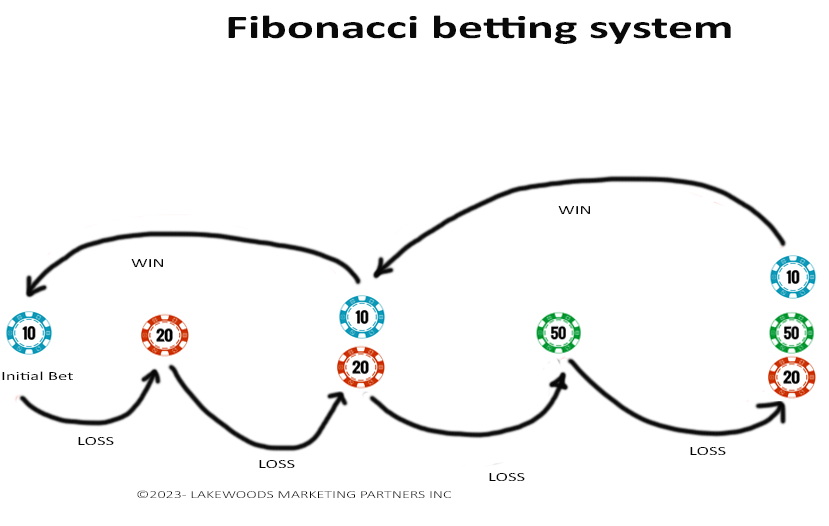Introduction
The Fibonacci sequence was first introduced in the Western world by the Italian mathematician Leonardo of Pisa, also known as Fibonacci, in his book “Liber Abaci” (Book of Calculation), published in 1202.
Fibonacci was born in Pisa, Italy, in 1170 and was educated in North Africa, where he learned about the Hindu-Arabic numeral system, which he later introduced to Europe. In “Liber Abaci,” Fibonacci presented a problem involving the growth of a population of rabbits, which he used to illustrate the sequence of numbers now known as the Fibonacci sequence.
The Fibonacci sequence is a sequence of numbers in which each is the sum of the two preceding numbers. The series begins 0, 1, 1, 2, 3, 5, 8, 13, 21, 34, 55, and continues infinitely.

Fibonacci discovered this sequence has many interesting properties and applications in mathematics, including relationships to the golden ratio, which appears in many aspects of nature and art. Today, the Fibonacci sequence is used in computer science, biology, economics, and music theory fields.
Fibonacci betting strategy
The Fibonacci system is a betting strategy based on the Fibonacci sequence. It is commonly used in sports betting, particularly in games with two possible outcomes: football or tennis.
The basic idea behind the Fibonacci betting system is to increase your bet size after each loss following the Fibonacci sequence. For example, if you start with a $1 and lose, your next bet should be $1 (the same amount as your first bet). However, if you lose again, your next bet should be $2 (the sum of the two previous bets in the sequence), and if you lose again, your next bet should be $3 (the sum of the two earlier bets in the sequence), and so on.
This betting system aims to recover your losses quickly by increasing your bet size after each loss while minimizing your risk by not betting too much in any round. However, it is essential to note that, like all betting systems, the Fibonacci system does not guarantee success, and it is vital to gamble responsibly and within your means.
It is also worth noting that the Fibonacci betting system is just one of many existing betting systems, and there is no one-size-fits-all approach to successful betting. Each method has its strengths and weaknesses, and finding a betting strategy that works for you and your specific goals and preferences is crucial.
Fibonacci betting system – The basic idea
The basic idea behind the Fibonacci betting system is to increase your bet size after each loss, per the Fibonacci sequence. The sequence starts with 0 and 1; each subsequent number is the sum of the two previous numbers (0, 1, 1, 2, 3, 5, 8, 13, 21, 34, 55, and so on).

Here’s how the Fibonacci betting system works in practice:
- Determine your initial bet size. It could be any amount you’re comfortable with, such as $1, $5, or $10.
- If your first bet wins, start again with your original bet size.
- If your first bet loses, bet the following number in the Fibonacci sequence. So if your initial bet was $1 and you lost, your next bet would be $1 (the same amount as your first bet). If you lose again, your next bet will be $2 (the sum of the previous two bets). If you lose again, your next bet would be $3, and so on.
- Continue betting the following number in the Fibonacci sequence after each loss until you win. When you win, return two numbers in the sequence and bet that amount.
- If you reach the end of the Fibonacci sequence without a win, start over from the beginning with your original bet size.
This betting system aims to recover your losses quickly by increasing your bet size after each loss while minimizing your risk by not betting too much in any round. However, it is essential to note that, like all betting systems, the Fibonacci system does not guarantee success, and it is necessary to gamble responsibly and within your means.
Here’s a simple implementation of the Fibonacci betting strategy in Python:
| import random def simulate_game(): # Return True for win, False for loss (example: 48.6% win chance in European Roulette) return random.random() < 0.486 def fibonacci_betting(initial_balance, num_rounds): balance = initial_balance fibonacci_sequence = [1, 1] current_index = 0 for _ in range(num_rounds): current_stake = fibonacci_sequence[current_index] if balance < current_stake: break if simulate_game(): balance += current_stake current_index = max(0, current_index – 2) else: balance -= current_stake current_index += 1 if current_index >= len(fibonacci_sequence): fibonacci_sequence.append(fibonacci_sequence[-1] + fibonacci_sequence[-2]) return balance initial_balance = 100 num_rounds = 1000 final_balance = fibonacci_betting(initial_balance, num_rounds) profit = final_balance – initial_balance print(f”Initial balance: {initial_balance}”) print(f”Final balance: {final_balance}”) print(f”Profit: {profit}”) |
In this example, simulate_game() represents a game with a winning chance of approximately 48.6%, similar to betting on red/black or even/odd in European Roulette. The main function fibonacci_betting() simulates the betting system over a number of rounds, adjusting the stake according to the Fibonacci sequence.
To use the code, set initial_balance to your starting balance and num_rounds to the number of rounds you want to simulate. Run the script, and it will output the initial balance, final balance, and the profit obtained using the Fibonacci betting strategy. Please note that this is just a simulation and results may vary.
Here are the basic Ppros and Cons of the Fibonacci system
Fibonacci system Pros
- Helps to recover losses quickly: The Fibonacci system is a progressive betting strategy that aims to recover losses rapidly by increasing the bet size after each loss. It can help bettors to recoup losses and make a profit.
- Can lead to large bets: While the Fibonacci system limits potential losses, it can still lead to large bets if the bettor experiences a string of losses. It can be risky, particularly for those with limited bankrolls.
- Limits potential losses: The system is designed to limit potential losses by increasing the bet size incrementally, thereby preventing bettors from risking too much money in a single bet.
Fibonacci system Cons
- No guarantee of success: Like all betting strategies, there is no guarantee that the Fibonacci system will lead to success. Betting outcomes are influenced by various factors, such as luck, the accuracy of the odds, and the bettor’s skill.
- Can lead to large bets: While the Fibonacci system limits potential losses, it can still lead to large bets if the bettor experiences a string of losses. It can be risky, particularly for those with limited bankrolls.
- May require a large bankroll: To use the Fibonacci system effectively, bettors may need a larger bankroll than they would need for other betting strategies. That is because the system requires a series of incremental increases in the bet size, which can add up quickly over time.
The Fibonacci system is a popular betting strategy used by many sports bettors. However, its effectiveness in generating profits depends on various factors, such as the odds of the event, the bankroll size, and the bettor’s discipline in following the system.
It is important to remember that successful betting requires a combination of skill, knowledge, and luck. Bettors who rely solely on a betting system without proper research and analysis of the event they are betting on are unlikely to achieve long-term success.
Fibonacci Roulette Betting System
The Fibonacci system can be applied to roulette in the following way:
- Choose an even-money bet: In roulette, even-money bets such as red/black, odd/even, or high/low have the highest probability of winning. Choose one of these bets to apply the Fibonacci system.
- Determine your initial bet size: Decide on your initial bet sizes, such as $1 or $5. it is the amount that you will bet on the first spin.
- Place your first bet: Place your initial bet on the chosen even-money bet. If you win, start over with your original bet size. If you lose, move to the next step.
- Increase your bet size: If you lose your first bet, increase your bet size to the following number in the Fibonacci sequence. For example, if your initial bet was $1 and you lost, your next bet would be $1 again. If you lose again, your next bet would be $2 (the sum of the previous two bets in the Fibonacci sequence). If you lose again, your next bet would be $3, and so on.
- Repeat the process: Continue betting the following number in the Fibonacci sequence after each loss until you win. When you win, return two numbers in the sequence and bet that amount.
For example, let’s say your initial bet was $1 on red. If you lose your first bet, your next bet will be $1 again. If you lose again, your next bet would be $2. If you lose again, your next bet would be $3. If you lose again, your next bet would be $5. If you lose again, your next bet would be $8. If you win your next bet, $13, you will return two numbers in the sequence and bet $5 on your next spin
Get up to $800 on your first three deposits!
Here's how to claim your three new player bonuses:
Click 'Play Now' and Register a New Real Account. Click “Deposit Now” to make the first of your three deposits. Return to “My Promotions” to claim up to $800! Your bonus credits will be instantly credited to your account.Welcome offer CA$600
Welcome to Euro Palace Online Casino! To get you started, we would like to offer you our New Player Welcome Bonus of up to CA$600
to enjoy in the casino as you experience the best in online casino games.
How your bonus works:
When you make your first deposit you will receive a 100% deposit match bonus of up to CA$200. When you make your second deposit you will receive a 100% deposit match bonus of up to CA$200. When you make your third deposit you will receive a 100% deposit match bonus of up to CA$200.New players only.
Welcome Bonus Offer: C$ 800 Bonus
1st Deposit - 100% Deposit Bonus up to C$ 4002nd Deposit - 100% Deposit Bonus up to C$ 200
3rd Deposit - 100% Deposit Bonus up to C$ 200
Welcome Bonus Offer: C$ 1500 Bonus
1st Deposit - 100% Deposit Bonus up to C$ 5002nd Deposit - 100% Deposit Bonus up to C$ 500
3rd Deposit - 100% Deposit Bonus up to C$ 500
Fibonacci Blackjack Betting System
The Fibonacci system can be applied to blackjack in the following way:
- Determine your betting unit: Decide on your betting unit, which is the minimum bet size at the table you play. For example, if the minimum bet at the table is $5, your betting unit is $5.
- Place your first bet: Place a bet equal to your betting unit. If you win, start over with your original bet size. If you lose, move to the next step.
- Increase your bet size: If you lose your first bet, increase your bet size to the following number in the Fibonacci sequence. For example, if your betting unit is $5 and you lose your first bet, your next bet would be $5 again. If you lose again, your next bet would be $10 (the sum of the previous two bets in the Fibonacci sequence). If you lose again, your next bet would be $15, and so on.
- Repeat the process: Continue betting the following number in the Fibonacci sequence after each loss until you win. When you win, return two numbers in the sequence and bet that amount.
For example, let’s say your betting unit is $5. If you lose your first bet, your next bet will be $5 again. If you lose again, your next bet would be $10. If you lose again, your next bet would be $15. If you lose again, your next bet would be $25. If you win your next bet, $40, you will return two numbers in the sequence and bet $15 on your next hand.
It is important to note that the Fibonacci system does not guarantee success and can result in losing streaks that require increasing your bets too high. Practicing proper bankroll management, setting limits on losses, and playing responsibly is essential.








